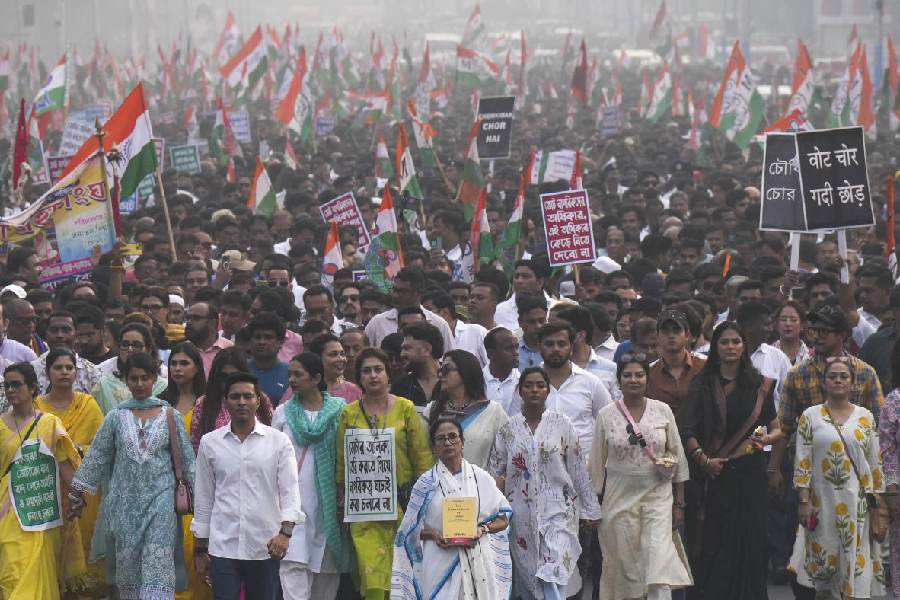 |
If blood and gore is what turns you on, Indian television is laying it on thick for you. Just take a look at the number of crime shows jostling for space in the late night slots ? there’s Sansani on Star News and Jurm on Aaj Tak. NDTV India runs Dial 100, while its English channel NDTV 24X7 airs Crime and the City. Even CNBC-TV 18, which is a business news channel, runs Uncovered ? an expos? on economic offences, while its Hindi business and consumer affairs channel Awaaz airs Pehredaar.
Kidnapping, murder, robbery, fraud ? you name it and they have it for you. And if viewership trends are any indication, these crime shows are becoming more and more popular each day.
Inspired by such crime shows in the West as America’s Most Wanted and Police Videos on Fox and Crimestoppers on Channel 13, most of the Indian shows are aired either daily or weekly.
Most news channels produce their crime shows in-house, with the exception of Star News’ hugely successful Sansani which is produced by BAG Films, the Delhi-based TV software company. Says BAG Film’s managing director Anurradha Prasad: “The biggest gratification is that the show is delivering numbers in terms of ratings, viewers and market share.” Since its launch in November 2004, Sansani gets an average market share of 27 per cent among the crime shows of Hindi news channels.
The story for Zee and Aaj Tak is similar. Their crime shows deliver a channel share of almost 20 per cent each. Says a spokesperson for the television audience monitoring agency TAM: “The crime show is yet another format in the reality genre which is working for broadcasters.”
Producers at news channels stress that the success of a crime show depends on the presentation, depth and dramatisation of the event. Sansani’s helpline to report untoward incidents, for instance, receives 3,000 to 4,000 calls a day. “Though many callers report minor incidents, the point is that people have a source to turn to when the police doesn’t help,” says Sansani’s executive producer Ajit Anjum. Agrees Ajay Chacko, head of marketing at CNBC-TV 18: “Crime shows are a means of airing the grievances of the common man who sometimes finds himself at the wrong end of justice.”
In fact, such is the growing popularity of crime shows that several broadcasters have started thinking about launching channels dedicated to crime. Says Channel 7’s managing editor Ashutosh: “Why not? Maybe in the next two years there will be channels devoted to crime programming.”
Broadcasters do not find the proliferation of crime shows an unusual development. Says Raju Santhanam, editor, Zee News: “Why single out broadcasters? Even the print media report on crime. It’s just that the medium is different.” Zee News has two programmes on crime ? Crime Reporter, a daily show, and Crime File, which is aired weekly.
In fact, Zee first launched a crime show on its entertainment channel Zee TV in 1998. Called India’s Most Wanted, the show was hosted by Suhaib Ilyasi. Reports say that the programme got a TRP of between 10 and 12 and the show helped nab 10 outlaws in a span of seven months.
Yet not all crime shows are a hit. Sony launched Bhanwar and Missing but these shows failed to cut any ice with audiences. Likewise, Channel 7 launched three crime shows ? Masoom, Deewangee and Raaz ? but they too had short stints on air.
One of the biggest criticisms of crime shows is the way they dramatise the events. Anuttama Banerjee, a psychologist in Calcutta, points out, “Crime shows which dramatise events may have an adverse effect on viewers. Sometimes it is difficult to understand whether it is the actual scene of the crime or just a staged version.” Even the police complain that channels tend to sensationalise crime.
TV channels, however, are quick to defend themselves. Says Ashutosh: “In normal life, people are not used to scenes of violence and blood but when it comes to crime stories we have to explore these elements and so the effect tends to be dramatic.” On objections from the police, a channel executive claims that crime shows make many police officers uncomfortable. “These shows often point out the lacunae in the law,” he says.
Not surprisingly, such shows are now finding lots of advertisers. ADEX, the advertising monitoring division of TAM, says that advertisers such as the Bharti group (Airtel), the makers of Pan Parag and LML scooters are buying airtime on crime shows. Says an executive at a fast moving consumer goods (FMCG) company, “As long as the show is delivering the relevant target audience, we do not mind advertising even on crime shows.”
Channels feel that crime is here to stay although it will manifest itself in newer forms that will sustain audience interest levels and improve interactivity.
Crime, in this case, certainly seems to pay.










